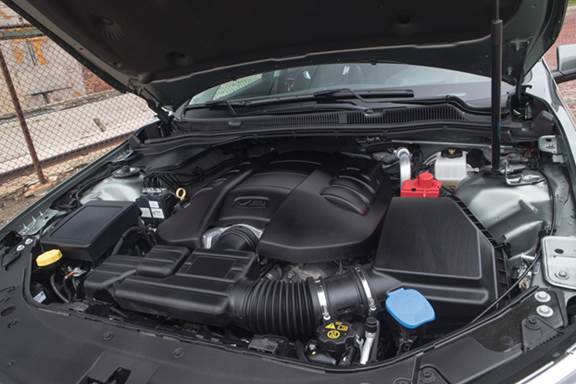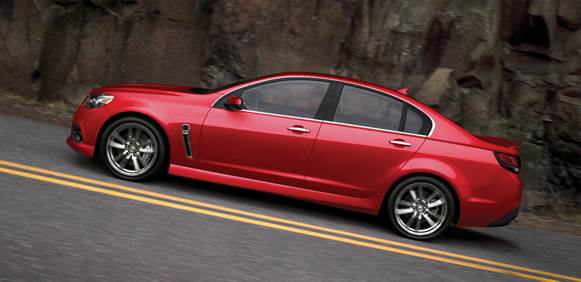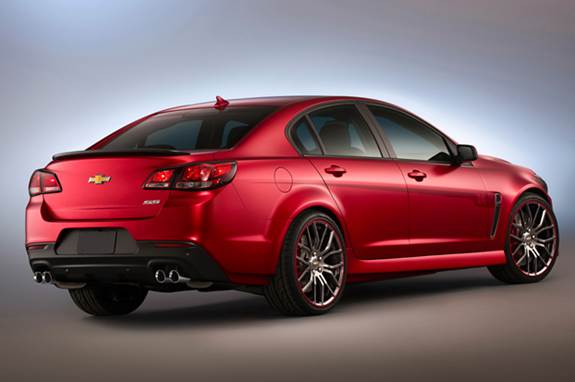“Other than having the same leadership, there is no similarity” between the two platforms, says Leone, who was also chief engineer for the CTS. “We’ve light-weighted the [Zeta] architecture and shaved 66 pounds. We’ve introduced a new electrical system that allowed quick adaptation of a host of [electronic] technologies.

“Fundamentally, the SS and Commodore are the same, but what plays in Australia plays well in North America. The exhaust tuning, seats, the LS3 – they’re unique and Chevrolet.”
The SS is large, with the same interior volume and 35 percent more trunk space than a Mercedes-Benz S-class, according to the EPA, on a substantially shorter wheelbase. No one at Chevy compares the two, though the SS looks like a good value at half the price of an S550. It’s as quick off the line and has a higher top speed (161 mph).
Leone says Chevy “referenced” other luxury cars during SS development – primarily the BMW 5-series and the CTS. Nonetheless, the apples-to-apples market-place competition is limited. It probably doesn’t include the all-wheel-drive, V6-powered Ford Taurus SHO, which is smaller inside and heavier than the SS. The SS’s only direct competitors just might be the SRT Charger and 300.

The Charger’s larger iron-block Hemi has the power advantage, with 55 hp and 55 lb-ft more than the SS LS3. Yet, the Dodge weighs nearly 400 pounds more, so the power-to-weight ratio evens out. Brake specs are essentially identical. The Charger offers adaptive suspension. The SS has an extra gear in its automatic, a bit more tire, more standard equipment and a $2,000 price edge.
How’s it look? That’s as subjective as it gets. By finish, the interior is rich and worth its price. Its proportions are classically rear-drive.
The SS isn’t ugly, but the manifold creases and bright splashes might be a bit busy. In more subtle colors like mystic green, its appearance does not necessarily demonstrate its might.
The “SS” kit was first applied to the 1961 Impala as a $55 option, adding chassis reinforcement and stiffer springs. Over the years, the badge has hung on Chevelles, Novas, El Caminos, Monte Carlos, Silverados, Cobalts, HHRs, etc. You can buy a Camaro SS right now.
“It’s always been attached to performance vehicles, and that’s all this one is,” says John Fitzpatrick, Chevy’s performance-line marketing manager. “There isn’t a V6 or lesser or more luxurious trim. There’s only an SS.

“There might be confusion [with other SS-badged Chevys], I suppose. But it would be more confusing if we called it Impala SS because it’s not an Impala.”
The SS is as much a brand builder as a sales generator. Chevy should be pleased with 3,000-4,000 deliveries annually. They started in late November. At $44,470, including destination, the SS comes with nav, leather/Alcantara interior, head-up display and a safety suite with eight airbags, a self-parking program, forward-collision alert, lane-departure warning, ad infinitum. Options are limited to a sunroof ($900) and full-size spare ($500).
“We’re proud of this car,” says Leone. “It gives Chevrolet a five-passenger sedan that goes head to head with cars that cost substantially more. It has the right balance of performance, refinement, isolation and safety.”
We’re inclined to agree. This new American automobile should have us dancing in the streets.
Specs On sale: Now Base price: $44,470 Drivetrain: 6.2-liter, 415-hp, 415-lb-ft V8; RWD, six-speed automatic Curb weight: 3,975 lb. 0-60 mph: 5.0 sec (est.) Fuel economy: 14/21/17 mpg |